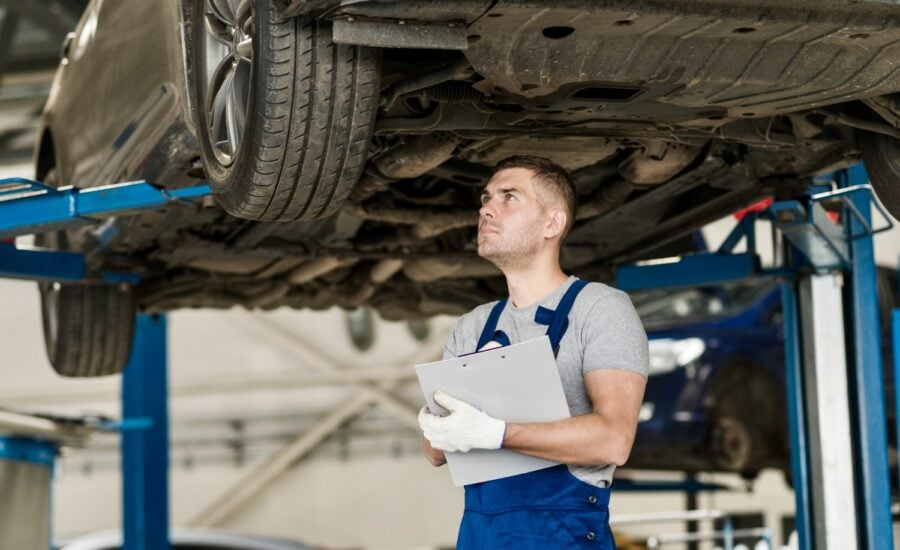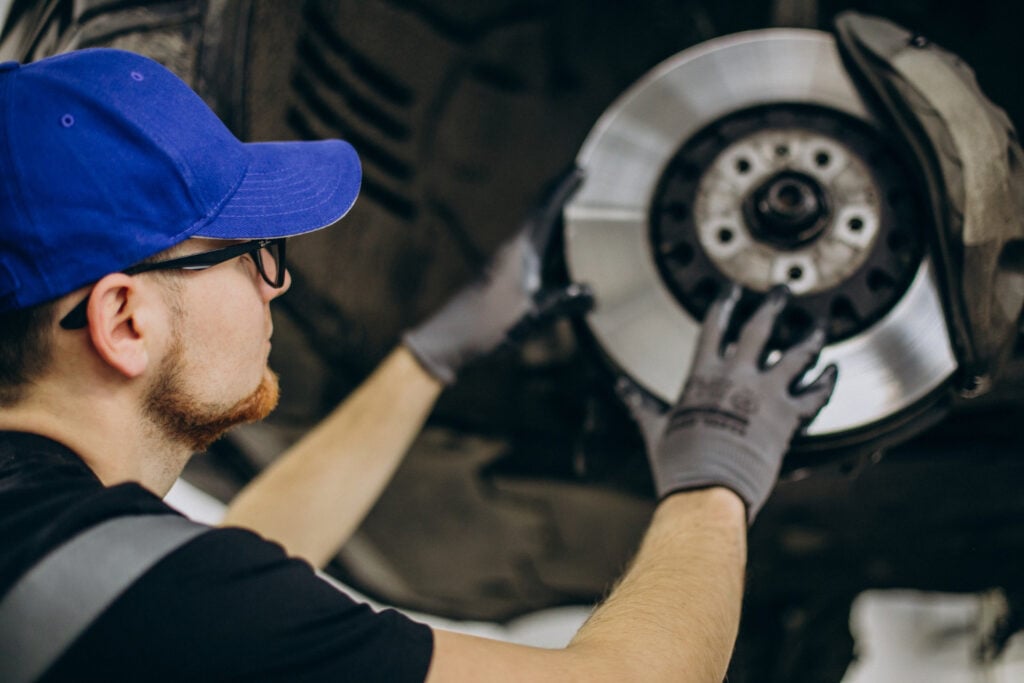How do car repair shops bill for services?
Why would a dealership bill more hours than its mechanics actually spent on servicing a car? Is this legal?
Advertisement
Why would a dealership bill more hours than its mechanics actually spent on servicing a car? Is this legal?

My dealership posts an hourly labour rate of $145, but the actual rate to service the brakes on my 2019 Toyota Camry hybrid equates to $173. I am wondering if this is common practice and is it legal?
In under 60 seconds, get matched with a personalized list of loan providers based on your needs and approval likelihood. No SIN required.
I brought my Toyota in for servicing yesterday at 1:40 p.m. The work was completed, and the car was ready by 5 p.m. In other words, the car was in service for approximately three-and-a-half hours. The total labour charge for these four services is $605.15. When you divide this by the posted hourly rate of $145, this equates to 4.2 hours of work.
When I reviewed my repair invoice, the hourly labour cost of $145 (not including HST) was charged as follows:
My question is, why am I being charged $173 an hour ($605 for three-and-a-half hours) rather than the posted rate of $145? If a shop is charging a predetermined amount for each type of service, then why post the hourly rate on the invoice? I don’t believe this is good customer service.
I was surprised when the shop recommended a brake flush on a three-year-old car with such low mileage—it has just 19,700 kilometres! With my previous car, a 2007 Camry Hybrid, which I brought to this shop for 12 years, a brake flush had never been recommended over the 178,000-kilometre period that I owned it. I have been told that brake fluid can last as long as the vehicle. Similarly, I questioned the necessity for the four-wheel balance since I was not experiencing any wheel vibration or uneven wear on four-year-old winter tires with 7,068 kilometres on them.
I should add that the Toyota dealership where I took my car has changed ownership over the past two years. Previously it was locally owned and I was very satisfied with the service; the owner was there every morning checking to make sure things were going well for customers. Now in this era of acquisitions, more and more of these local dealerships are being bought out by external conglomerates. After the new ownership group took over, very few of the former staff and workers remained; I’m not sure if they were let go or quit. Some reviews of this dealer group are negative.
–J.S.
Like most dealers, yours uses a flat-rate system for billing repairs. Each labour operation includes time for the mechanic to bring the car in and make a diagnosis or inspection and get their tools and parts ready. In your situation, you likely paid to take the wheels off three times:
The technician likely completed the work in two to two and a half hours, based on the time it would take a mechanic with experience working on Toyota vehicles to complete all four services ordered for the same vehicle on the same visit.
In a pure flat-rate shop, a “productive” mechanic bills 50-plus hours a week for about 35 hours worked. At repair shops that specialize in “fast moving” repairs, it could be more, up to 60 hours billed for 35 to 40 hours of actual clock time. The mechanics share a percentage of the additional hours billed to you with their employer.
You might be surprised to learn that an hour isn’t always 60 minutes in the world of auto repair. Many years ago, Quebec’s Consumer Protection Office concluded that an hour of billed time at a Canadian Tire store it investigated was actually about 40 minutes long. A Court of Appeal decision upheld the shop’s use of the flat-rate billing system for estimating labour as long as the customer had approved the estimate. I’m not aware of any enforcement action taken in other provinces over labour charges, even though some have repair legislation that requires an hourly labour rate to be disclosed.
Here is what the Automobile Protection Association (APA) wrote in 2011:
Canadian Tire tended to bill much more time than actually observed on the underhood camera. For example, one Canadian Tire store charged $57.50 to install a new battery and a second charged $46. Kal Tire, Midas and Fountain Tire charged just $30, $23, and $36 respectively for the same work. In all cases, installing a battery on the APA test vehicles took under 10 minutes.
Canadian Tire’s position is that all repairs performed were approved by the mystery shoppers and that repairs were performed “with integrity.” APA has learned that mechanics in some Canadian Tire stores receive a low base hourly wage, with compensation calculated on the number of hours they can bill to customers, which can be more than the actual clock time spent on the job. Service personnel at the counter may also receive an incentive based on the amount of the invoice or additional work sold to a customer.
Many repair shop owners extol the benefits of the flat-rate system:
A former shop owner I spoke to about your experience had a different take on flat-rate billing:
“The mistake people make is to confuse the posted labour rate with an actual hour. A unit of flat-rate labour is not an hour. The flat-rate system stinks. Everyone complains about it, but nobody has come up with a better system.
“I paid hourly, never flat rate, and suffered the consequences because my posted hourly rate included 60 minutes of actual work. In a flat-rate shop, techs sometimes skip lunch to make more hours.
“A dealership or big chain-store environment operates differently from a one-person or family-owned independent repair shop. The techs who thrive in that environment sometimes run two hoists, juggling so as not to be waiting for anything. There’s less time to help apprentices, and errors tend to be covered up because the techs are unpaid when they’re correcting mistakes.”
Your dealer, like other shops on the flat-rate system, uses commercially available labour guides. Some of these guides will pad the labour times for common repairs like yours, which has the potential to make their subscriptions more popular with shops. It’s up to the service advisor at the counter to adjust the bill appropriately when several small maintenance and repair items overlap—some guides allow for that.
The flat-rate system makes comparing the posted labour rates at different shops an unreliable predictor of the final bill. Some small shops charge actual clock time, which is what the APA prefers, for all but the simplest repairs and inspections, which are billed at a fixed charge of an hour or so. For the same posted hourly labour rate, the final labour charge will usually be lower at a repair facility that bills for actual time than at a flat-rate shop like the one you visited.
Let’s look at the services you received for your Camry.
Although brake fluid is never replaced on many vehicles, some carmakers have a recommended service interval, which can be as frequent as every two years for vehicles approved for use off-road. Brake fluid can accumulate moisture, and replacing it periodically protects sensitive components. Brake fluid can first be tested for water content and inspected for colour and contamination before deciding to replace it, but for a hybrid Camry, Toyota says to replace the fluid every three years.
With all hybrid vehicles, a brake service like the one you paid $210 for to clean corrosion off the brake caliper guide pins and pads and lubricate the calipers, is prudent preventive maintenance that will postpone expensive repairs down the road. The reason: Hybrids and electric vehicles (EVs) use regenerative braking, which means the conventional discs and pads see a lot less use; eventually they corrode and seize from non-use and exposure to road salt and humidity.
This can require complete replacement of the rotors, pads and possibly calipers long before the components have worn out. Brake caliper service typically costs $60 to $75 for two brakes on the same axle and is recommended annually on EVs and hybrids, as well as the rear brakes on many gasoline vehicles, including Hyundai, Kia, Subaru and BMW models.

The service was probably not required in your situation, in the absence of a vibration complaint and with so little accumulated tire mileage.
I checked with Jay Zinniger, an expert at Talon Tire in Saint-Laurent, Que., for his take on the service. At Talon Tire, the policy is to balance the wheels when rotating tires that have accumulated more than 5,000 kilometres since their last wheel balancing, unless the customer declines the service. The extra charge is small, about $25 for a car like your Camry. Zinniger says it tends to reduce comebacks, where a customer notices a vibration problem that wasn’t there before the tires were put into storage; this sometimes happens after a tire is rotated to a different axle. Talon’s charge to install and balance tires for a seasonal changeover is $65 with wheel balancing included, and $40 without.
Conclusion: The services recommended to you were reasonable, but the pricing is on the high side, which may be common to the Toyota dealers in your market area. In APA undercover repair surveys, the price for auto repairs varied across Canada, from lowest in rural markets and in Atlantic Canada and Quebec, to highest in Alberta and British Columbia.
You may have run into new incentives offered to personnel at the service counter. At auto dealership repair departments, most of the people preparing estimates and invoices receive a type of commission based on the value of the repair orders they write up, in addition to their base salaries. In some cases, dealerships offer an additional bonus or “spiff” for promoting certain services, like oil treatments, replacement wiper blades or brake fluid flushes.
As with so many other types of businesses in Canada, new car dealerships are undergoing a huge consolidation. For years, automakers favoured single stores run by owner-operators, sometimes even requiring that their names be on the door or signage. Those days are gone.
The value of land in metropolitan markets and the cost of building and improving facilities has dramatically driven up the cost of buying a dealership. The level of in-house capability required to deal with finance, technology, privacy laws, data protection, zoning, etc. has increased markedly. The older class of owners, many of whom rose through the ranks as salespeople or managers at dealerships, or were the children of the original owner, is looking toward retirement.
Dealer groups and chains, which use shareholder and investor money and are run by professional managers with business degrees, have a much easier time coming up with the capital to buy a dealership at today’s high valuations than a single owner-operator.
After an acquisition, dealer groups import their back-office IT systems, senior management and more aggressive commission plans to drive “efficiencies.” Those steps are supposed to help them reduce expenses and earn a higher return to cover the financing and investment costs of an acquisition. In some cases, the new owners must immediately begin expensive updates to facilities and equipment—these are dictated by the automaker and can bump up the cost of taking over a business. All these developments can contribute to sharper practices in sales and service. And it can contribute to high staff turnover in the months after an acquisition.

Apply for a personal loan with a 8.99% to 29.49% APR. Plus, 100% online application and no early repayment fees.

Apply for a personal loan with a 9.99% to 34.95% APR. Plus, fast e-transfers and no hit to your credit score when you apply.

Pre-qualify instantly to borrow up to $35,000, with rates from 8.99%
When a customer complains, a shop will sometimes compare the actual time worked on the mechanic’s internal labour record to what was charged and make an adjustment, like crediting you with a discount on the labour or offering a no-charge oil change or carwash on your next visit. In the case of a grossly exaggerated labour charge, a claim for a reduction of the invoice might succeed in a court, even if the customer had approved the estimate.
If you did not watch the work being done, you may be surprised to be told that two mechanics worked on your vehicle simultaneously—it happens, and it would mean that the labour charge is running at more than twice the speed of actual clock time, so simply comparing the time your car was at the repair shop to clock time would not provide accurate guidance.
Changing to a repair shop that works with actual clock time, the minority in most markets, would likely result in some savings, but is not practical for most vehicle owners. Here are some steps you can take to get a handle on repair charges:
George Iny is the Executive Director of the Automobile Protection Association (APA), a consumer advocacy association with offices in Toronto and Montreal.
Share this article Share on Facebook Share on Twitter Share on Linkedin Share on Reddit Share on Email
Hi,Am i being reaped off ,i towed my car to the nearest garage today, they charging me 156$ an hr to change the radiator,does that makes sense?Since when a garage hr is that price?
I’m told it will take 4hrs ,they gave me an estimate for 1700$ ,had no choice to leave my car there i just paid a tow truck to tow me there ,my car broke down with me on the highway, the garage was 5 minutes away .I ‘m 1 1/2 hr away from where i usually bring my car for repairs.
Due to the large volume of comments we receive, we regret that we are unable to respond directly to each one. We invite you to email your question to [email protected], where it will be considered for a future response by one of our expert columnists. For personal advice, we suggest consulting with your financial institution or a qualified advisor.
Hi I took my 11 year old HONDA CRV to our local dealer to have a Safety Recall: Frame Corrosion done and to be paid for by Honda, while there the service person informed me that the rearbrake pads should be replaced. Seeing that the wheels where off for the corrosion repair I gave the go ahead. I got there at 10 am, and got billed at 10.49 am, both repairs where done within the hour, I was billed for an hour to get the brakes done. My bill was $ 292.70 the hourly rate was $ 138.00 .this sounds unfair.because Honda allows about 3 hours to do the installation of the frame stiffener(s)